How do you square and plumb walls to each other?
Bathroom gutted. Tub set and plumbed. Want to install tile around the tub. However, this is an old house and the walls are neither plumb nor square. How do you guys deal with this short of re-framing? Thanks.
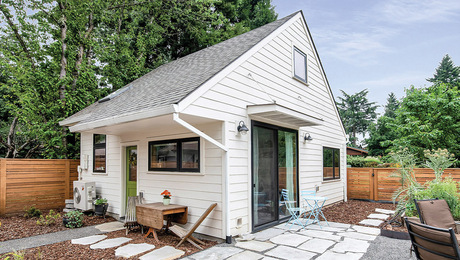

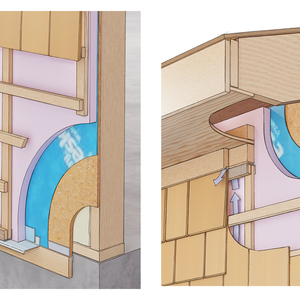
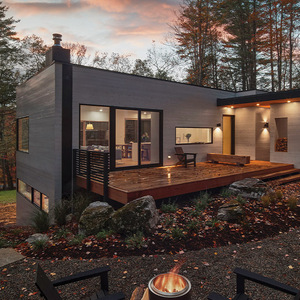
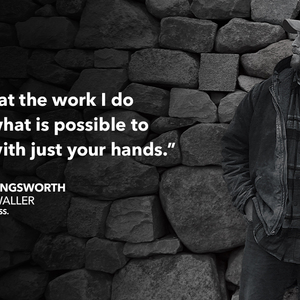
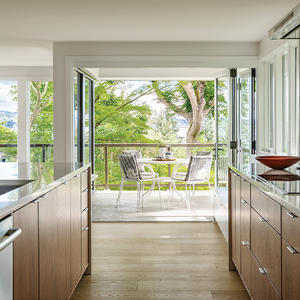













Replies
Use a power plane to trim any stud that is crowned out. Use furring strips to build up any stud that is shy. Usually the furring strips are tapered and are zero at one end. Takes time and patience to get it done correctly, and you need to study the walls a bit before starting, to determine the planes you want to end up with. I do not install the backerboard until the framing is close to perfect, because it's a *real* headache to float out tile using thinset.
depending how wacky the existing studs are, it may be easier to sister straight studs to the existing ones than to pad/shave them.
run some boards through the jointer, and slap 'em on. Notch or piece around plumbing.
k
Sistering in some studs seemed to be an easy solution, but I soon discovered that the top plates aren't square to each other. They have about a 1/4" spread over a run of about three feet. When I try to sister in the studs to correct the plumb, they tend to protrude where they meet the top plate. Am I doing it wrong?
No, you're not doing anything
No, you're not doing anything wrong, that makes sense. You'll need to sister some blocks at the top plates if you want to attach the backer board to them. Keep in mind it doesn't have to fit perfectly end to end, as long as it lines up in the right plane.
I usually also add blocking on the flat three feet up (if I'm running my backer horizontally and there'll be a joint there) although I don't think it's required.
k
KFC remnided me. Now is the time to add blocking if you want it. Are you thinking about adding/hanging any accesories on top of the tile? This the time to add blocking for grab bars?
good point about the blocking for grab bars, etc.
k
If you're right then you're
If you're right then you're right.
That means the top plate is wrong.
It helps to not go so fast with this that you miss a step.
Square the bottom and then ( and only then) proceed to the next step. They all build on eachother.
I would choose a reference wall to square and measure from. The reference wall might be the longest highest wall. Make that wall flat, plumb and square first. Next make the opposite wall parallel, plumb and square. Now square the adjacent walls to the parallel walls. Use a power planer and cardboard shims. Everything will now be square and plumb. I use felt paper, then hardibacker,then tile. Have fun.
In an old bathroom forget about plumb and square, and just make sure the walls are reasonably flat.
You'll have some weird
You'll have some weird looking tiles if you don't at least plumb the walls. Out of square I can live with to a point, but you've only got so much play before the tile/tub intersection is messed up.
Yep, and this will be my first tiling job ever. I'm a little nervous about messing this up.
why not have someone float out the walls with a mortar base, much faster and easier and a good tile underlayment
Orbs
If this has been covered just ignore this.
Walls are usually squared and lined up on the subfloor.
The subfloor gives you a table or plane to lay them out on.
Then from that base you transfer that layout up the walls to the cieling by making sure the walls are plumb.
Since your tub is set it is the table or plane you start with.
Since there is a long side to the tub you start there.
Then the two shorter walls are squared to it.
The three walls are plumbed off this rectangle up to the cieling.
I think that is it.
A framing square should help with the short walls since they are so short.
Old houses don't always allow
Old houses don't always allow for everything to be shimmed out perfectly--it isn't feasible to correct for a room out of square by many inches especially when the room is tight enough as is.
To think like a finish carpenter look at the room--notice how some areas jump out at you and others really don't. As you walk in a room the area behind a door is rarely seen but other areas are very important visually.
Spend your time making the most visible places perfect and don't sweat the hard to fix areas that aren't prominent. Tiled areas should be flat and any area around a tub or shower should be nearly perfect to make the tile job easier, but I wouldn't automatically adjust the framing on the wall opposite the tub other than shiming so it's a flat plane. On the other hand if the floor tile pattern (and/or client) really screams for perfection that gets added into the equation. Nothing in a house is perfect--we can just get away with various degrees of error on different surfaces.
Absolutely! I think good remodels in older homes is almost art more than a collection of facts or techniques.
Besides, it will drive you batty if you dwell on every little thing.
Further, there are tricks to avoid highlighting out-of-square rooms and the like. With floor and wall tile, eg, it's always important to avoid having a thin cut tile along an uneven floor/wall joint -- a wide piece will make the unevenness less evident. And with floor tile sometimes a border held away from the wall by 6" or so will distract the eye from the uneven wall.
Just try to get it to come out reasonably well around the tub, plus the spots that hit the eye when you first walk in and when you're sitting on the pot. Other areas are less important.
Thanks for all the feedback. You guys are always helpful.
you mention being 1/4 out, thats a reasonable tolerance to work towards. Anything closer could drive you nuts.